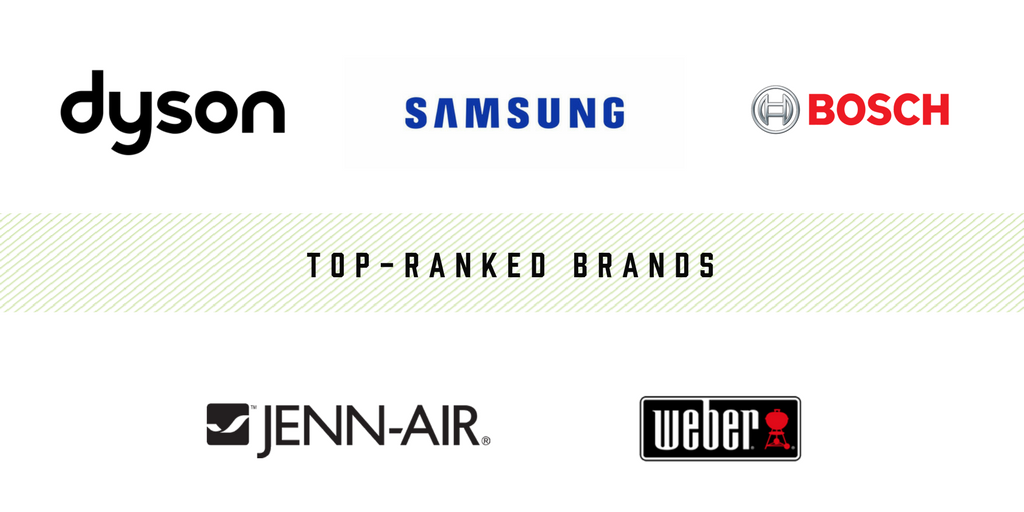Hill Holliday released the Brand Edge Index, a first-of-its-kind brand index designed to measure the factors that underlie brand preference and position brands as winners in the daily share battle.
The first edition of the Brand Edge Index assesses the home appliance category and evaluates and ranks the top home appliance brands from within 6 subcategories: vacuums, dishwashers, washer machines, ranges, refrigerators, and grills. Brands evaluated are ranked consecutively by Brand Edge score to separate stand-out brands from those that are less preferred.
DIVERGE talked to Ilya Vedrashko, SVP, Director Consumer Intelligence to find out more:
Why did you create the Brand Edge Index?
The agency’s mission is to help its clients win the daily share battle in highly competitive categories. The Brand Edge Index methodology distinguishes between different kinds of competitive situations, and recommends a strategy that’s specific to a brand’s performance relative to competition. We’ve been using the Brand Edge Index metric as an internal research tool, and are now making it public.
What was the methodology for the survey?
We surveyed a representative sample of 5,600 U.S. adults balanced to the U.S. Census by gender, age group, and major region. For each brand on our list, we have collected over 900 observations. The research was conducted through December 2016 to January 2017 using Origin, Hill Holliday’s consumer insights unit.
How is Brand Edge Index different?
- Brand Edge focuses directly on the what marketer’s care about — winning the daily share battle.
- It compares apples to apples. Knowing that Google or Apple brands are doing well is of little use to anyone who is not Google or Apple.
- In the world of too many marketing metrics, the Brand Edge Index focuses on the two metrics that ultimately matter: how many people know about your brand, and how many of them want your brand more than they want your competitors.
Why did you choose home appliances?
We were tired of indexes that only ranked the top 100 global brands. We wanted to make something that provided pragmatic marketers with a metric they could use today, not abstract comparisons that aren’t useful. That’s why we decided to focus our reports at the category level. Home appliances came first because it’s a category where branding is important and where we had enough experience to validate our findings on a gut level.
What were some of the key findings and did they surprise you?
We surveyed a representative sample of 5,600 U.S. adults balanced to the U.S. Census by gender, age, group and region, and yielded a wealth of insight into what motivates consumers in the home appliance category. The key takeaway? Brand awareness doesn’t always lead to preference. In fact, we were surprised to learn that there was only one subcategory (Vacuums) where the brand with the highest awareness garnered the top spots in brand preference and brand edge rankings. Additionally, it was surprising to see reliability emerge as the most important attribute in four out of the six subcategories. The importance of reliability across the home appliance category indicates that it is a prerequisite for driving Brand Edge.
We’ve distilled the findings down to five key findings:
- Top brands were clear winners: Top-ranking brands across dishwasher, washing machine, and grill subcategories had at least an 85% advantage in brand edge score over the second-ranked brands.
- Niche brands are fierce competition: Niche brands, along with disruptive brands, outrank longstanding first-to-market brands.
- High awareness doesn’t always translate to Brand Edge: In only one subcategory did the brand with the highest awareness garner the top spots in brand preference and brand edge rankings.
- Reliability drives preference: Consumers are 140% more likely to reject a brand that is seen as unreliable.
- Style matters: Style and function don’t have to be mutually exclusive in the kitchen; in fact, in fact, women are 2.3X more likely to choose a brand that was stylish compared to one that wasn’t.
What’s more important — brand awareness or brand edge?
Brand Edge is more important. A brand with a high brand edge score and low awareness has an easier path to follow (spend more). A brand with high awareness and low brand edge score may actually be spending money that’s reinforcing less desirable aspects of the brand, when maybe they’d be better served to take a step back and rethink their messaging and approach.
What are the top-ranking brands doing right?
Brands that hit the mark in the home appliance category are brands that have proven themselves to be preferred and remembered, despite the fact that their products are purchased once every 5-15 years. The ability for brands like Dyson, Bosch, and Samsung to generate a level of preference that goes far beyond what is expected based on awareness alone, rests on the power they yield as brands that have a reputation of being reliable and effective.
A huge part of gaining Brand Edge comes from delivering on what’s important to consumers: reliability and effectiveness. And having an honest understanding of how your brand stacks up against these expectations is where it starts.
What opportunities might brands be missing?
Brands with higher brand edge scores than expected may able to capture a disproportionately larger share of the market without necessarily having to spend more advertising dollars. Specifically, this may apply to first-to-market brands who already have the eyes and ears of consumers but are looking to shift or boost brand perception.


